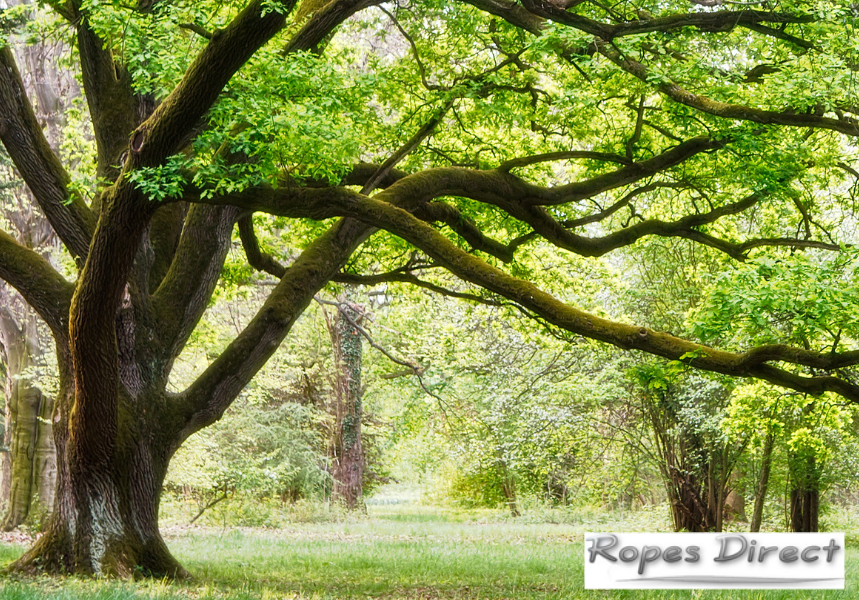Summer is (finally!) here. It’s time to entice the kids away from the TV and outside into the fresh air – and what better way to do so than with a tree swing in the garden? It’s simple old-school fun that will keep them entertained for hours. But, of course, your child’s safety is of paramount importance and here we offer a step-by-step guide on how to install a tree swing correctly.
-
Choose the right type of tree
Certain types of tree are unsuitable for a rope swing. For example, fruit trees and evergreens are quite delicate. It’s easy for the branches to split and, therefore, they should be avoided. Hardwoods – such as oak, ash, and maple – are a much better option. These are strong and sturdy enough to bear the weight of the swing and their health is unlikely to be affected by the swing itself.
-
Evaluate its health
Before you start the tree swing installation, it’s important to check the health of the tree. Take a look at the branches – do they show any signs of infection, disease or splitting? If so, choose a different tree. It’s also a good idea to avoid any trees with narrow connections between the branches and trunk. These could easily snap and pose a potential safety risk to your child.
-
Find a suitable branch
Once you’re satisfied with the tree’s health, the next step is to select a branch. Ideally, it needs to be around eight inches in diameter and 20ft high. This should leave enough space for your child to use the tree swing comfortably, without their feet dragging across the ground. It also needs to extend horizontally and should be large enough to hang the swing approximately 3-5ft away from the trunk.

-
Attach the tree swing to the branch
There are two methods that can be used to hang a tree swing and the right one for you will depend on the type of swing you have purchased. For example, the oak tree swing – available at Ropes Direct – can be easily installed using the rope itself, whereas others require additional rope fittings.
Method 1 – Tying
If your swing can be tied to the branch with rope, start by throwing the spliced loop over the branch. Pass the tails of the rope through the spliced loop, let the loop ride up, and tighten against the branch. It’s then easy to attach the seat to the ropes using simple overhand knots. Check out our online video clip for a helpful demonstration on how to hang this type of tree swing.
Method 2 – Bolting
If your swing requires an additional fitting – such as a swing hook – start by drilling two holes on the underside of the branch. These holes should be spaced appropriately and slightly bigger than the screw’s diameter. Insert the threaded bar of the hook through each hole and secure in place using nuts and washers. You can then attach the rope swing using a carabiner and extension ropes.
-
Do the final checks
The final step is to check the safety of the tree swing. Before allowing your child to use the new equipment, ensure all connections are secure and test it out for yourself. The swing should feel stable under your weight and it’s important to make sure the branch doesn’t bounce as you swing.

Invest in a new tree swing today
As part of our ‘Play is Fun!’ collection, here at Ropes Direct, we have a wide range of tree swings to choose from – including classic wooden tree swings and moulded sets, monkey swings and rubber-seated options. They’re a great way to encourage kids to play outside this summer and, thanks to our handy ‘how-to’ guide, even a DIY novice can have them up-and-running in no time.
So why not take a look today? If you have any questions about the tree swings available or need further advice on how to hang a tree swing correctly, please feel free to get in touch. Either give us a call on 01692 671721 or send an email to info@ropesdirect.co.uk and we’ll get back to you.

